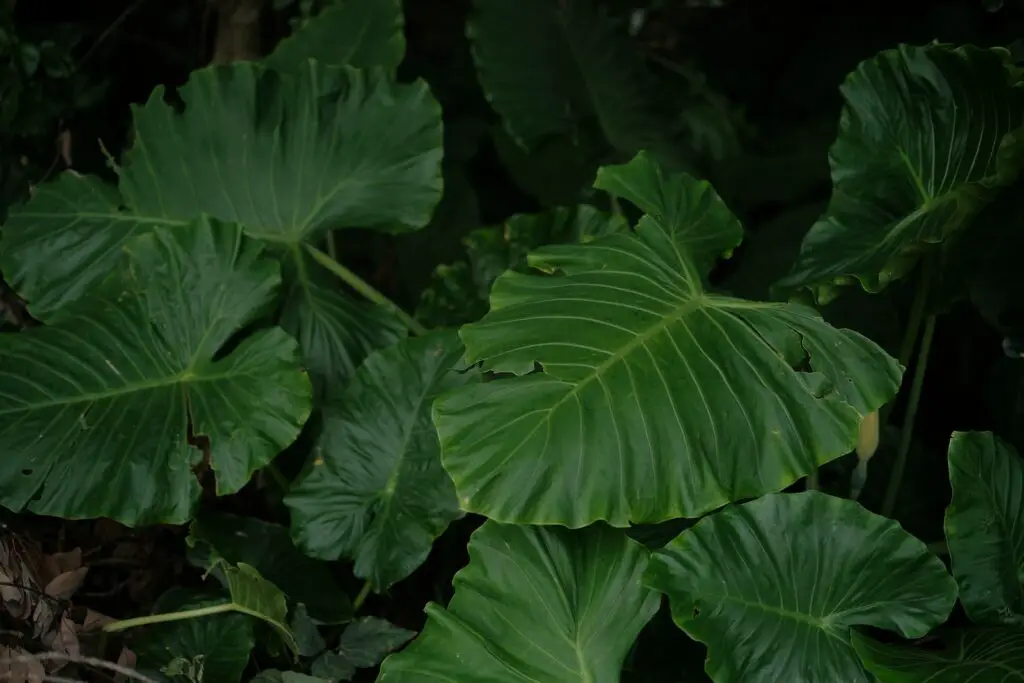
Yellowing elephant ears can be a cause for concern for plant owners. Elephant ears, also known as Colocasia esculenta, are tropical plants that are known for their large, heart-shaped leaves. While these plants are relatively easy to care for, yellowing leaves can indicate an underlying issue.
One of the most common reasons for yellowing elephant ears is overwatering. These plants prefer moist soil, but they can quickly become waterlogged if they are overwatered. When this happens, the roots can become damaged, which can cause the leaves to turn yellow. It is important to make sure that the soil is moist but not waterlogged.
Another reason for yellowing elephant ears is nutrient deficiencies. These plants require a balanced fertilizer to thrive, and a lack of nutrients can cause the leaves to turn yellow. It is important to make sure that the plant is receiving the proper nutrients, which can be achieved through regular fertilization.
Table of Contents
Understanding Elephant Ear Plants
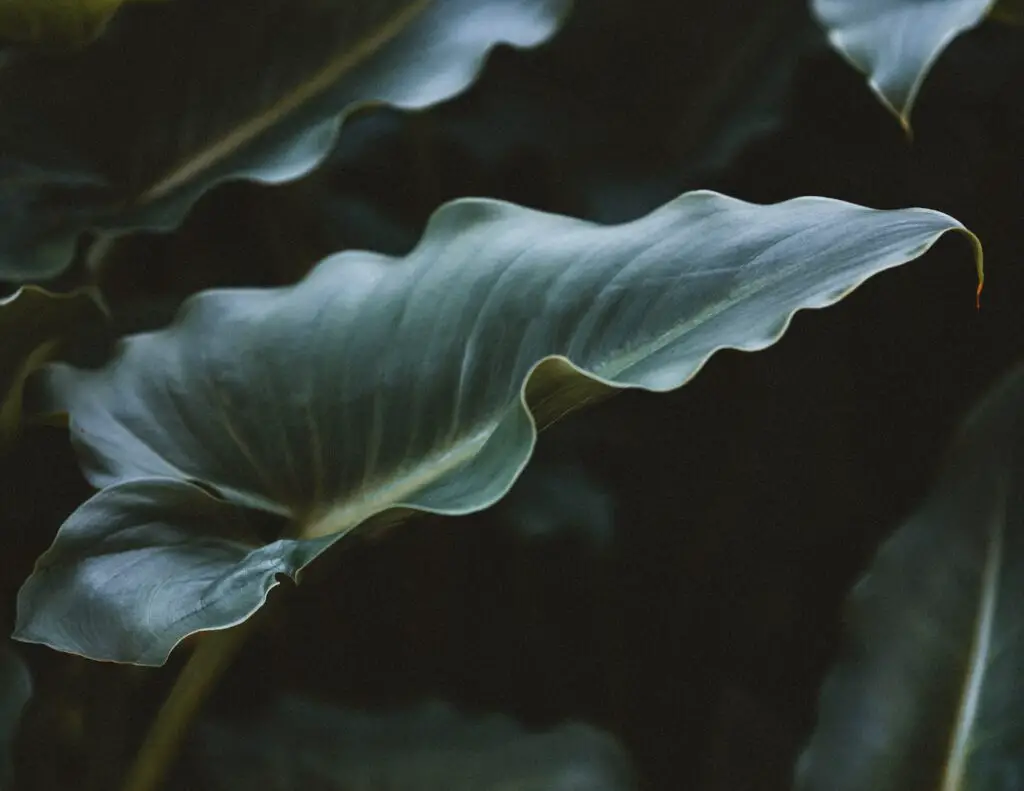
Elephant ear plants, also known as Colocasia, are tropical plants that are commonly grown for their large and striking foliage. These plants are typically grown for their ornamental value and can be found in a variety of colors and patterns.
Elephant ear plants require a warm and humid environment to thrive. They grow best in well-draining soil that is rich in organic matter. These plants also require regular watering and fertilization to maintain their growth.
One of the common issues that elephant ear plant owners face is yellowing of the leaves. This can be caused by a variety of factors, including overwatering, underwatering, nutrient deficiencies, and pests.
To diagnose the cause of yellowing leaves, it is important to examine the plant closely. If the leaves are yellowing from the base up, it may be a sign of overwatering. If the leaves are yellowing from the tips down, it may be a sign of underwatering.
In addition to proper watering, elephant ear plants also require regular fertilization. These plants are heavy feeders and require a balanced fertilizer that is high in nitrogen.
In conclusion, understanding the needs of elephant ear plants is crucial for maintaining their health and appearance. By providing proper watering, fertilization, and care, these tropical plants can thrive and provide a striking addition to any garden or indoor space.
Common Causes of Yellowing Leaves
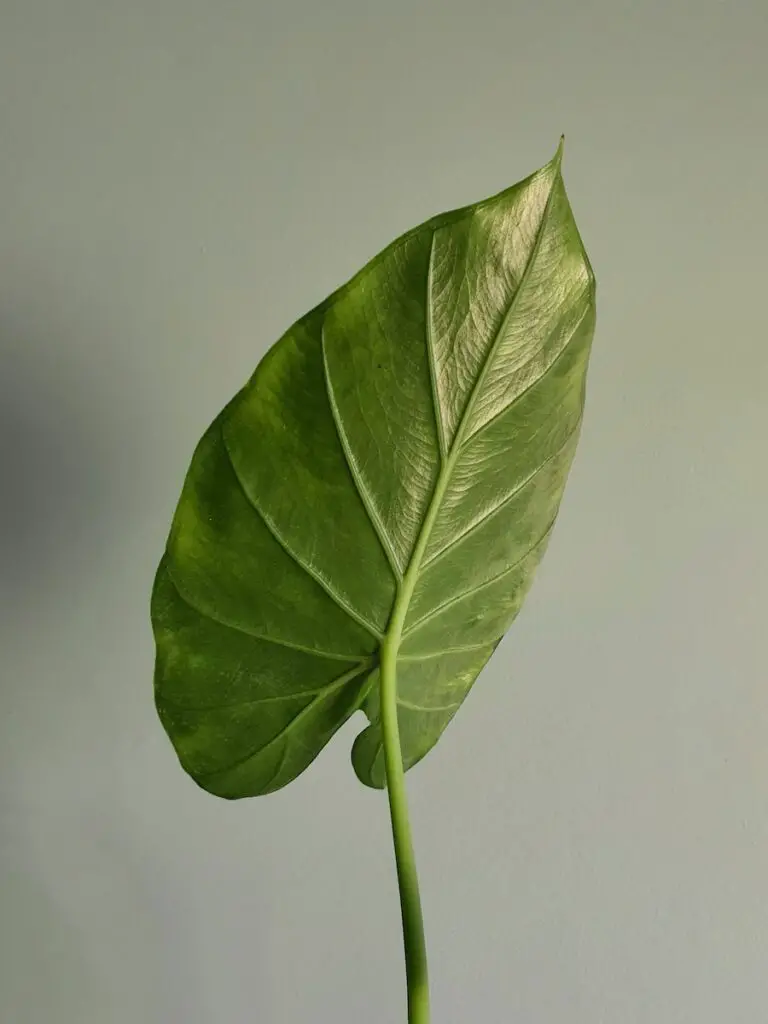
Yellowing leaves are a common problem for elephant ear plant owners. There are several reasons why the leaves of your elephant ear plant may be turning yellow. Here are some of the most common causes:
Overwatering
Overwatering is one of the most common causes of yellowing leaves in elephant ear plants. When the soil is too wet, it can cause the roots to rot, which can lead to yellowing leaves. If you suspect that overwatering is the cause of the problem, reduce the frequency of watering and allow the soil to dry out between waterings.
Underwatering
Underwatering can also cause yellowing leaves in elephant ear plants. When the soil is too dry, the plant may not be getting enough water, which can cause the leaves to turn yellow and wilt. If you suspect that underwatering is the cause of the problem, increase the frequency of watering and make sure the soil is moist but not waterlogged.
Nutrient Deficiencies
Yellowing leaves can also be a sign of nutrient deficiencies. If the plant is not getting enough nutrients, it may not be able to produce healthy green leaves. Common nutrient deficiencies that can cause yellowing leaves include nitrogen, iron, and magnesium. If you suspect that nutrient deficiencies are the cause of the problem, you may need to fertilize the plant with a balanced fertilizer.
Pests
Pests can also cause yellowing leaves in elephant ear plants. Common pests that can cause yellowing leaves include spider mites, mealybugs, and scale insects. If you suspect that pests are the cause of the problem, inspect the plant for signs of infestation and treat with an appropriate insecticide.
Environmental Stress
Environmental stress can also cause yellowing leaves in elephant ear plants. Stressful conditions such as extreme temperatures, low humidity, or exposure to direct sunlight can cause the leaves to turn yellow and wilt. If you suspect that environmental stress is the cause of the problem, try to provide more favorable growing conditions for the plant.
Watering Issues
Yellowing elephant ears can be a sign of watering issues. Proper watering is crucial to maintain healthy growth and vibrant foliage. Here are some common watering problems that may cause yellowing of elephant ears:
Overwatering
Overwatering is one of the most common watering issues that can cause yellowing of elephant ears. When the soil is consistently wet, the roots can become waterlogged and start to rot. This can lead to yellowing of the leaves, as the plant is unable to absorb nutrients and water properly. To avoid overwatering, ensure that the soil is well-draining and that water does not accumulate in the pot or container.
Underwatering
Underwatering can also cause yellowing of elephant ears. When the soil is too dry, the plant will start to wilt and the leaves will turn yellow. This is because the plant is unable to absorb enough water to sustain its growth. To avoid underwatering, ensure that the soil is moist but not waterlogged. Water the plant regularly, but do not let the soil dry out completely between watering.
Improper Watering
Improper watering can also cause yellowing of elephant ears. This can occur when the plant is watered inconsistently or when the water quality is poor. Inconsistent watering can lead to stress on the plant, which can cause the leaves to turn yellow. Poor water quality can also affect the plant’s ability to absorb nutrients and water properly.
To avoid improper watering, ensure that the plant is watered consistently and that the water quality is good. Use filtered or distilled water if the tap water is too hard or contains high levels of chlorine.
Excessive Water
Excessive water can also cause yellowing of elephant ears. This can occur when the plant is exposed to heavy rainfall or when the soil is consistently wet. Excessive water can lead to waterlogging of the soil, which can cause the roots to rot and the leaves to turn yellow.
To avoid excessive water, ensure that the plant is not exposed to heavy rainfall and that the soil is well-draining. If the plant is in a container, ensure that the pot has drainage holes to allow excess water to drain away.
In summary, yellowing of elephant ears can be caused by a variety of watering issues, including overwatering, underwatering, improper watering, and excessive water. To maintain healthy growth and vibrant foliage, ensure that the plant is watered consistently, the water quality is good, and the soil is well-draining.
Light and Temperature Factors
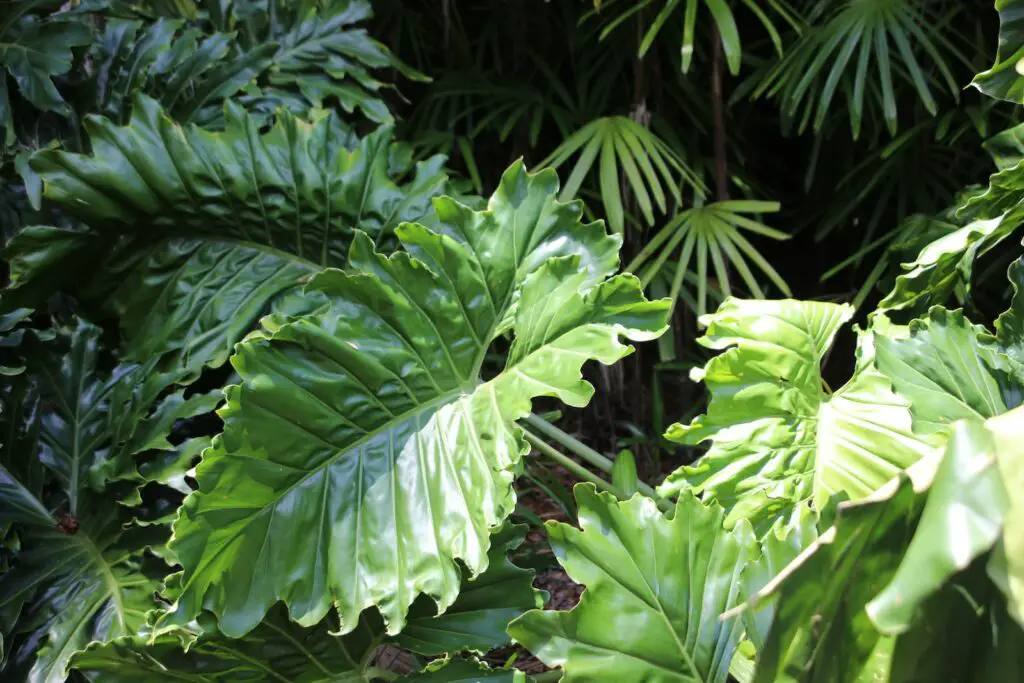
Sunlight Requirements
Elephant ears require bright indirect sunlight to thrive. Direct sunlight can cause the leaves to burn, while a lack of sunlight can cause the leaves to turn yellow. If your elephant ears are not getting enough light, consider moving them to a brighter location or supplementing with grow lights.
Temperature Considerations
Elephant ears prefer warm temperatures between 65-85°F. Cold drafts can cause the leaves to turn yellow and should be avoided. If your elephant ears are in a cold location, consider moving them to a warmer spot or using a space heater to regulate the temperature.
Humidity Concerns
Elephant ears require high humidity levels to thrive. Low humidity can cause the leaves to turn yellow and dry out. If your home has low humidity, consider using a humidifier or misting the leaves regularly to increase moisture levels.
In summary, providing bright indirect sunlight, warm temperatures, and high humidity levels can help prevent your elephant ears from turning yellow.
Soil and Fertilizer Needs
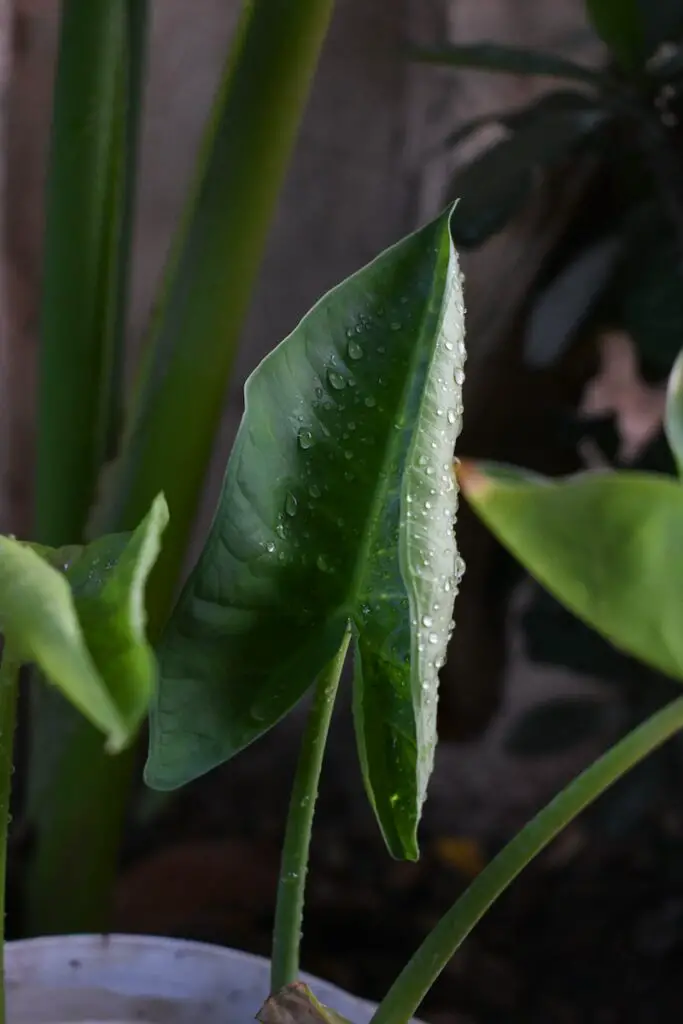
Soil Conditions
Elephant ears thrive in well-draining soil with consistent moisture. Unfavorable soil conditions can lead to yellowing of the leaves and stunted growth. Poor drainage can cause water to accumulate in the soil, leading to root rot and other issues. To ensure proper drainage, it’s important to plant elephant ears in a pot with drainage holes or in an area with well-draining soil.
Fertilizer and Nutrition
Elephant ears require regular fertilization to maintain healthy growth and prevent nutrient deficiencies. Slow-release fertilizer is recommended to provide a steady supply of nutrients over time. Lack of nutrition or nutrient insufficiency can cause yellowing of the leaves and other issues. It’s important to provide the plant with adequate nutrition to ensure healthy growth.
In summary, proper soil conditions and regular fertilization are crucial for the health of elephant ears. Ensure that the soil has good drainage and consistent moisture, and provide the plant with slow-release fertilizer to prevent nutrient deficiencies.
Plant Care and Maintenance
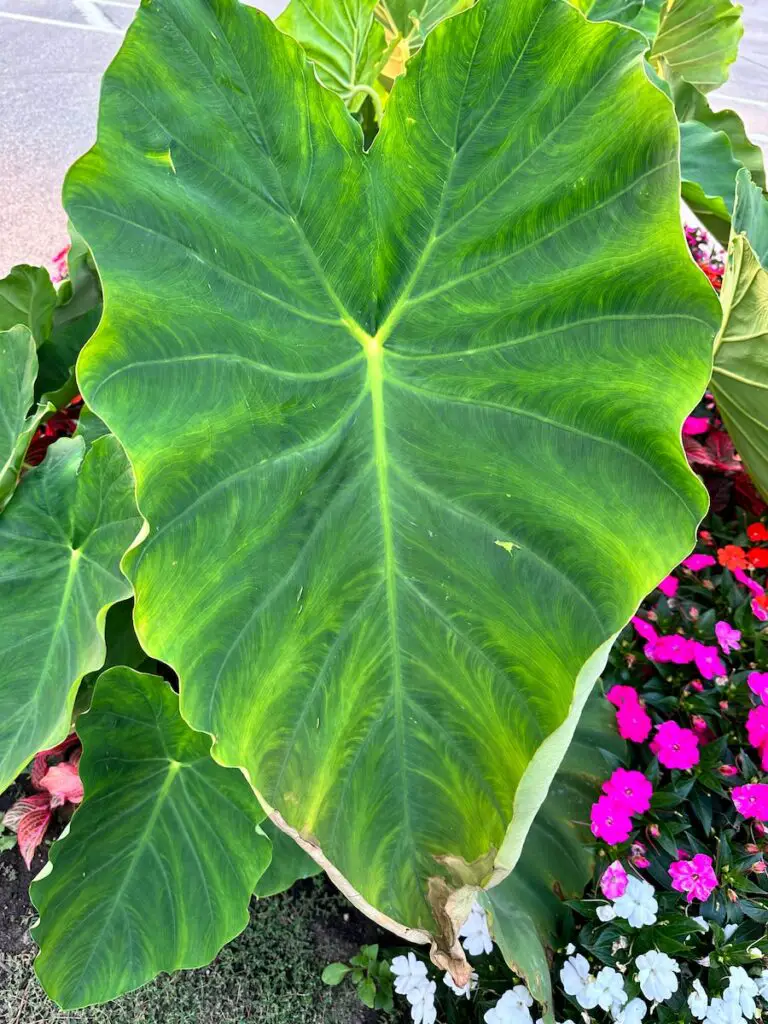
Repotting
Repotting elephant ears is necessary when the plant has outgrown its current container or the soil has become compacted. It is best to repot during the growing season when the plant is actively producing new growth. Choose a pot that is one size larger than the current one and fill it with a well-draining soil mix. Gently remove the plant from its current container, loosen any tangled roots, and place it in the new pot. Add soil around the plant, firming it in place, and water thoroughly.
Pruning
Pruning is an important part of elephant ear care. Regular pruning helps to control the size of the plant and promote new growth. Cut back any dead or yellowing leaves to promote new growth. Pinch back the tips of the stems to encourage branching. If the plant becomes too large, cut back the entire plant to within a few inches of the soil. This will promote new growth and rejuvenate the plant.
Dormancy
Elephant ears naturally go dormant during the winter months. During this time, the plant will stop producing new growth and the leaves will begin to yellow and die back. It is important to reduce watering during this time to prevent root rot. Once the leaves have died back, cut them off at the base of the stem. Move the plant to a cool, dry location and reduce watering to once every few weeks. In the spring, when new growth appears, resume regular watering and fertilizing.
Remember to check the roots regularly for any signs of damage or root rot. If the roots are damaged, remove any affected areas and repot the plant in fresh soil. With proper care and maintenance, elephant ears can thrive and add a tropical touch to any garden or indoor space.
Pest and Disease Management
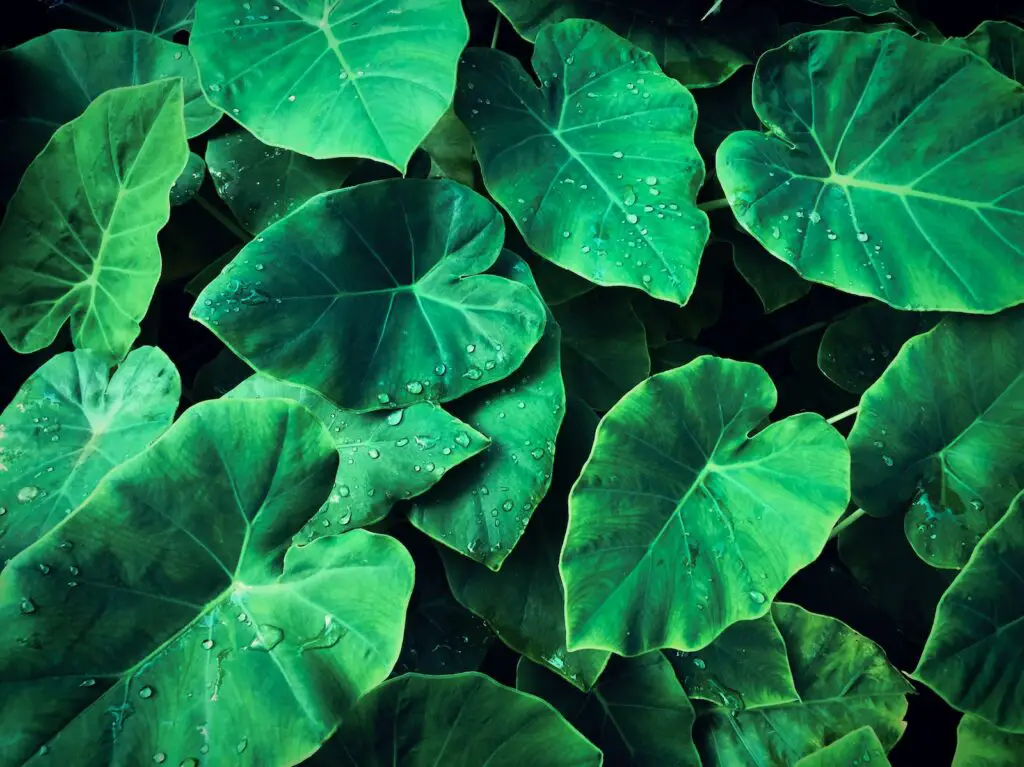
Pest Infestation
One of the most common reasons why elephant ears turn yellow is due to pest infestation. The most common pests that attack elephant ears are spider mites, mealybugs, and aphids. These pests suck the sap from the leaves, causing the leaves to turn yellow and eventually die.
To prevent and control pest infestation, it is important to regularly inspect the plant for any signs of infestation. If pests are detected, the plant should be treated immediately with neem oil, which is a natural insecticide. Neem oil can be sprayed on the leaves and stems of the plant to kill the pests.
Diseases
Elephant ears are also susceptible to various diseases, which can cause the leaves to turn yellow. The most common disease that affects elephant ears is fungal leaf spot. This disease is caused by a fungus that thrives in warm and humid conditions.
To prevent and control fungal leaf spot, it is important to avoid overwatering the plant and to ensure that the soil is well-draining. If the plant is already infected, it should be treated with a fungicide. The infected leaves should be removed and disposed of to prevent the spread of the disease to other parts of the plant.
In summary, pest and disease management is crucial to prevent elephant ears from turning yellow. Regular inspection, early detection, and appropriate treatment can help to keep the plant healthy and vibrant.
Identifying Serious Problems
If the yellowing of elephant ear leaves is accompanied by other symptoms, it could be a sign of a more serious problem. Here are some signs to look out for:
Wilting Leaves
If the leaves of the elephant ear plant are wilting and drooping, it could be a sign of root rot. This is a common problem caused by overwatering or poor drainage. The roots become waterlogged and start to rot, which can lead to the death of the plant.
Brown or Black Spots
If the yellowing leaves have brown or black spots, it could be a sign of a fungal or bacterial infection. These infections can spread quickly and cause significant damage to the plant. It’s important to remove any affected leaves and treat the plant with a fungicide or bactericide.
Stunted Growth
If the elephant ear plant is not growing as it should, it could be a sign of nutrient deficiency or pest infestation. Check the soil pH and nutrient levels to ensure that the plant is getting the nutrients it needs. Also, check for signs of pests such as spider mites or aphids.
Natural Causes
Sometimes, the yellowing of elephant ear leaves is simply a natural part of the plant’s growth cycle. Older leaves will naturally turn yellow and die off, making way for new growth. If this is the case, there is no need to worry.
Overall, it’s important to keep an eye on your elephant ear plant and look out for any signs of serious problems. With proper care and attention, your plant should thrive and produce beautiful, healthy leaves.